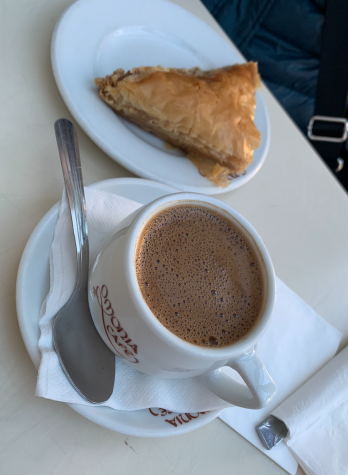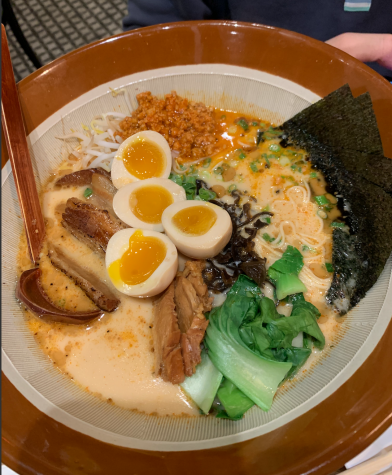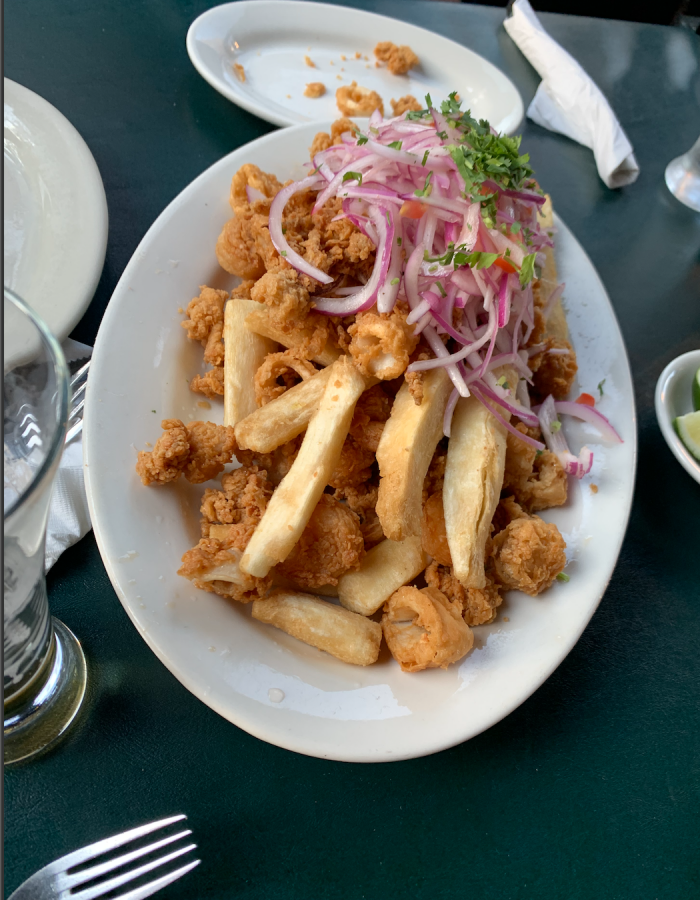The Global Dining Experience in New York
New York is known for its iconic entertainment business and glamor, but the food industry is really what makes the Big Apple a special place.
Urubamba is a restaurant in Jackson Heights that serves traditional Peruvian food and has become popular among the residents, noticed most by their ceviche and Jalea (pictured above).
New York City is arguably the most diverse city in the world. Home to over 600 languages and ethnicities, it is ideal for learning about different communities and their cultures.
Within New York, one borough triumphs over the rest in terms of diversity: Queens. “The World’s Borough,” according to the New York State website is, “the most ethnically diverse urban area in the world… the borough is a patchwork of dozens of unique neighborhoods, each with its own distinct identity.”
Queens can be compared to a gigantic jigsaw puzzle, with each neighborhood being intricately shaped and cut off, all priceless for the completed piece. The borough is the largest in size and second in population, yet the various communities fit together and are close in terms of togetherness and the vicinity.
The closeness of neighborhoods allows Queens to be able to host the number of people that it does. Neighborhood borders closely match with that of a map, from its beginnings to ends, and define the types of culture. Take the subway; its way of connecting people goes further than as a means of transportation and serves as gateways to the different communities residing in the city. The changes are most noticed and unique on the 7 line, which averages about eight blocks per stop. From 69th St Fisk Avenue to 74th St Roosevelt Avenue, to 82nd St Jackson Heights, one has passed through an East Asian, a South Asian and Middle Eastern, and a Hispanic neighborhood in under 5 minutes. So it is no surprise that the dining options in Queens have a wide selection of international food available.
Enter Astoria, a community that has a lot of Mediterranean and Asian influence. Here, you can find places like the International Food Hall, located in the heart of the neighborhood. It has eight restaurants, ranging from Indian to Italian food, with its “varied food options meant to reflect the diversity of Queens itself,” according to the project leader, Steve Lyoshir.

Close by, Jackson Heights is a neighborhood with a lot of Colombian, Peruvian, and other South Asian food options. From popular restaurants like Urubamba (Peruvian), cafés, and meeting centers like La Uruguaya, to South Asian supermarkets like Patel Brothers are family favorites that attract people from all over New York and New Jersey. Visitors throughout the community spend time eating and connecting with one another in these cultural centers.
The amazing amount of diversity of food in Queens has become noticed by visitors. Projects such as food tours have become a popular way of visiting many restaurants and getting to experience the global dining options offered in New York City.
The sizable number of restaurants around the city have been one of the defining features of New York, but this has also proven to be a major problem in recent times during the Coronavirus pandemic. The pandemic hit the food industry extremely hard, with significant financial damage done to family-owned and small restaurants and businesses. Recovery has been difficult; many restaurant projects have been delayed or shut down due to a lack of funding or maintenance.
Yet, despite the struggles from 2020-2021, the city has adapted once again, and recovery has begun throughout the five boroughs. As the vaccine rollout progresses and COVID-19 cases decline, some past customs are slowly being brought back, like in-person dining and group gatherings. Other newer measures have been adopted into the system, like service people wearing masks while preparing food.
The changes that occurred in New York City’s restaurants not only reflected a period of global disaster but also demonstrated how resilient the community is. Ultimately, the pandemic revealed that the Empire State had become a home for many different people, and various groups have become one large and great community, helping each other during times of crisis.
“The World’s Borough,” according to the New York State website is, “the most ethnically diverse urban area in the world… the borough is a patchwork of dozens of unique neighborhoods, each with its own distinct identity.”

Camila Kulahlioglu is an Editor-in-Chief for ‘The Science Survey.’ She hopes that her writing will inspire her peers to find new literary passions...











